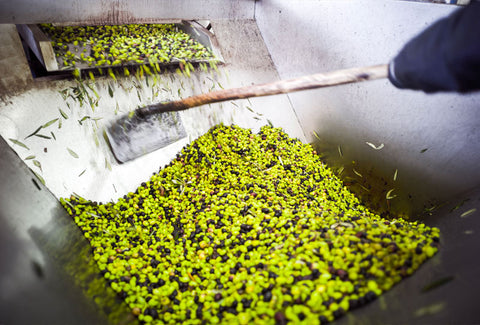No Products in the Cart
The world produces 3 million tons of olive oil per year. Leading the market are Mediterranean countries like Spain, Italy, Greece and Tunisi. The reason why olive oil is so popular there is of course the climate, but it is also the result of centuries of history, with the first evidences recorded as early as 10.000 years ago.
Olives have hundreds of varieties, called cultivars, which means their flavors vary from country to country.
In Italy there is a Region in the South that alone supplies 40% of Italy's olive oil production and 12% worldwide: this is Puglia.

Olive oil is an essential part of culture here, from food to the picturesque landscapes. While the region has 4 million inhabitants, there are as many as 60 millions olive trees, and some have been there for centuries. Divided among corporate and local businesses, there are ove 1,000 olive mills spread across the region.
The olive oil produced here comes from a blend of local cultivars: Cima di Mola, Leccina, Olivastra, Simona, Picholine, Coratina and Cellina di Nardò. Let's have a look to the typical production process of Italian olive oil.

First, harvested olives enter the mill on a conveyor belt. This process gets rid of about 90% of the leaves, while the remaining 10% of the leaves are ground into paste with olives and pits. 
Then, the olives are pressed at room temperature using granite wheels, a method that is called “cold-pressed”. It means that oil was extracted with no heat, which would harm its delicate flavor. The paste then moves into a kneading machine that helps break it down into water and oil. 
It's spread over large fiber discs. The discs are piled up and placed onto a hydraulic press. This is where you can start to see oil and water quite clearly: the yellow liquid is oil while the black is water. It takes around 2.5 hours for each pile to be pressed fully.

After which, oil and water will be separated for good. The final product is called unfiltered olive oil and has a cloudy appearance. It is then stored in stainless steel tanks. It can be sold straight away, left to mature for one or several months, or it can be filtered to remove any excess of pulp or olive particles.
Filtering is done through a funnel and cotton wool. When an oil is cold-pressed, made without the use of chemicals, and is unrefined, it's called extra-virgin. This is the highest grade when it comes to olive oil.
Olive oil is graded by its acidity level. A high quality extra-virgin olive oil will have less than 0.8% acidity. It's a pure fruit juice after all!
Someone purchased